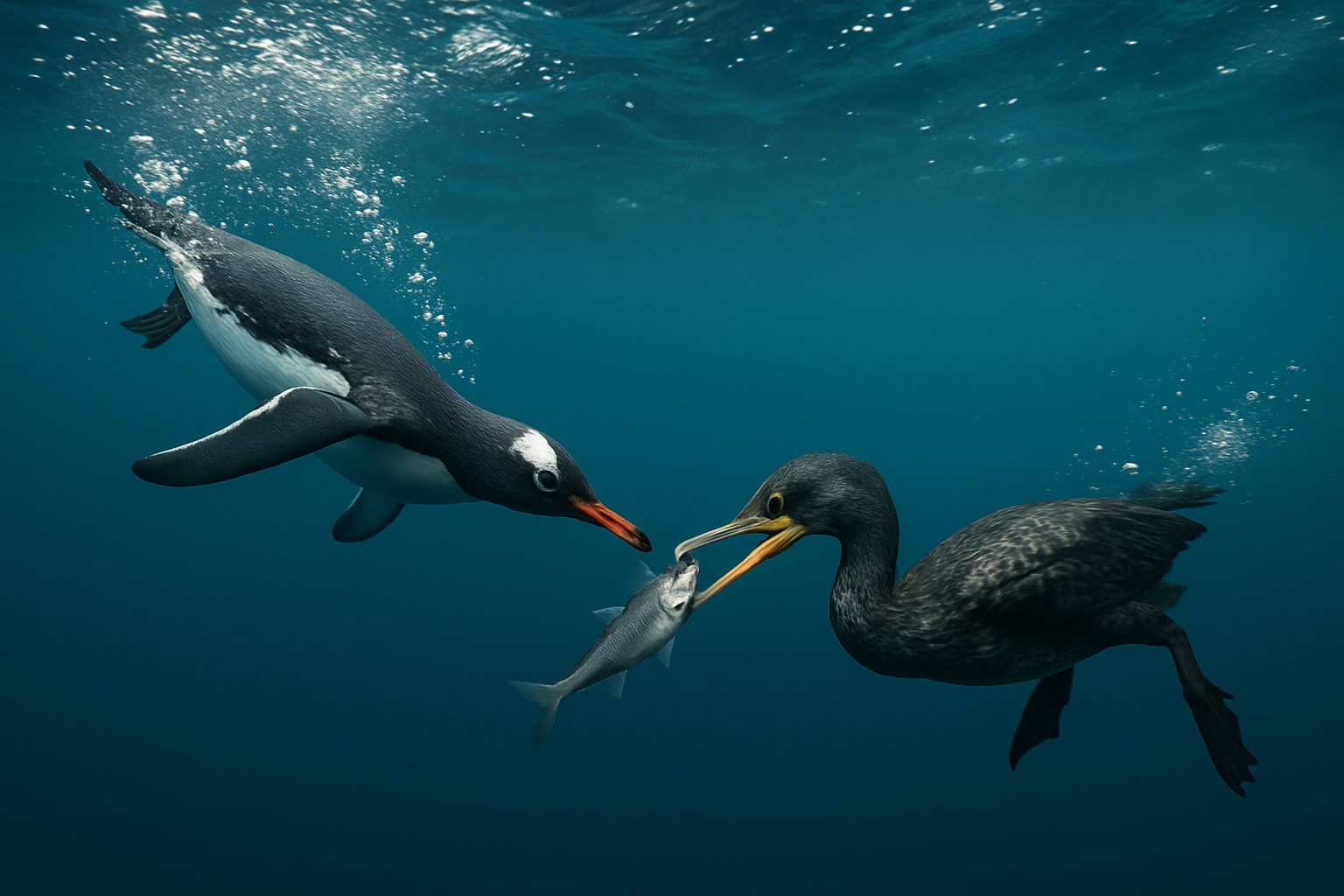Aquatic Acrobats: The Surprising World of Diving Birds
Diving birds, nature's underwater explorers, have captivated researchers and bird enthusiasts alike with their remarkable adaptations and hunting prowess. These aquatic acrobats possess an array of specialized features that allow them to thrive both above and below the water's surface. From cormorants to penguins, diving birds showcase the incredible diversity of avian evolution and the marvels of aquatic adaptation.

Penguins, perhaps the most well-known diving birds, have evolved flightless wings that serve as powerful flippers underwater. Their streamlined bodies and waterproof feathers allow them to reach impressive depths, with some species capable of diving over 500 meters. On the other hand, cormorants retain the ability to fly but have adapted to dive from the water’s surface, using their webbed feet and hooked beaks to catch fish and other aquatic prey.
Anatomical Marvels: Built for the Dive
Diving birds possess a range of anatomical adaptations that enable them to excel in their underwater pursuits. One of the most crucial features is their ability to store oxygen efficiently. Many species have developed specialized hemoglobin and myoglobin proteins that allow them to hold more oxygen in their blood and muscles, respectively. This adaptation enables them to stay submerged for extended periods without the need to surface for air.
Additionally, diving birds have evolved denser bones compared to their land-dwelling counterparts. This increased bone density helps counteract buoyancy, allowing the birds to descend more easily and conserve energy while underwater. Some species, like the common loon, can even expel air from their feathers and air sacs to further reduce buoyancy and achieve greater depths.
Underwater Vision: Seeing Clearly in Murky Waters
One of the most fascinating adaptations of diving birds is their enhanced underwater vision. Many species have developed specialized corneas and lenses that allow them to see clearly both above and below the water’s surface. This remarkable ability is achieved through the flattening of the cornea, which compensates for the refraction of light underwater.
Some diving birds, such as penguins, have also evolved unique iris structures that can rapidly adjust to changing light conditions. This adaptation allows them to transition seamlessly between the bright surface and the dimly lit depths, giving them a significant advantage when hunting in varied aquatic environments.
Hunting Strategies: Masters of Underwater Pursuit
Diving birds employ a variety of hunting techniques to capture their prey. Some species, like gannets, perform spectacular plunge dives from great heights, entering the water at high speeds to surprise and catch fish. Others, such as cormorants, use their powerful legs and webbed feet to propel themselves through the water in pursuit of their quarry.
Penguins, with their wing-like flippers, are capable of incredible underwater maneuverability. They can change direction rapidly and accelerate quickly, allowing them to chase and capture agile prey like squid and fish. Some penguin species have even been observed using cooperative hunting strategies, working together to herd schools of fish into more manageable groups.
Conservation Challenges: Protecting Aquatic Acrobats
Despite their remarkable adaptations, many diving bird species face significant conservation challenges. Climate change, overfishing, and pollution pose serious threats to their habitats and food sources. Rising sea temperatures and changing ocean currents can disrupt the availability of prey, forcing diving birds to travel further and expend more energy to find food.
Oil spills and plastic pollution are particularly devastating for diving birds, as they can damage their waterproof feathers and lead to hypothermia or drowning. Additionally, many species are at risk of becoming entangled in fishing gear or ingesting plastic debris, which can cause injury or death.
Conservation efforts for diving birds often focus on protecting their breeding grounds and foraging areas. Marine protected areas and sustainable fishing practices play crucial roles in preserving the ecosystems these birds depend on. Ongoing research into their behavior and habitat requirements is essential for developing effective conservation strategies and ensuring the long-term survival of these remarkable aquatic acrobats.




